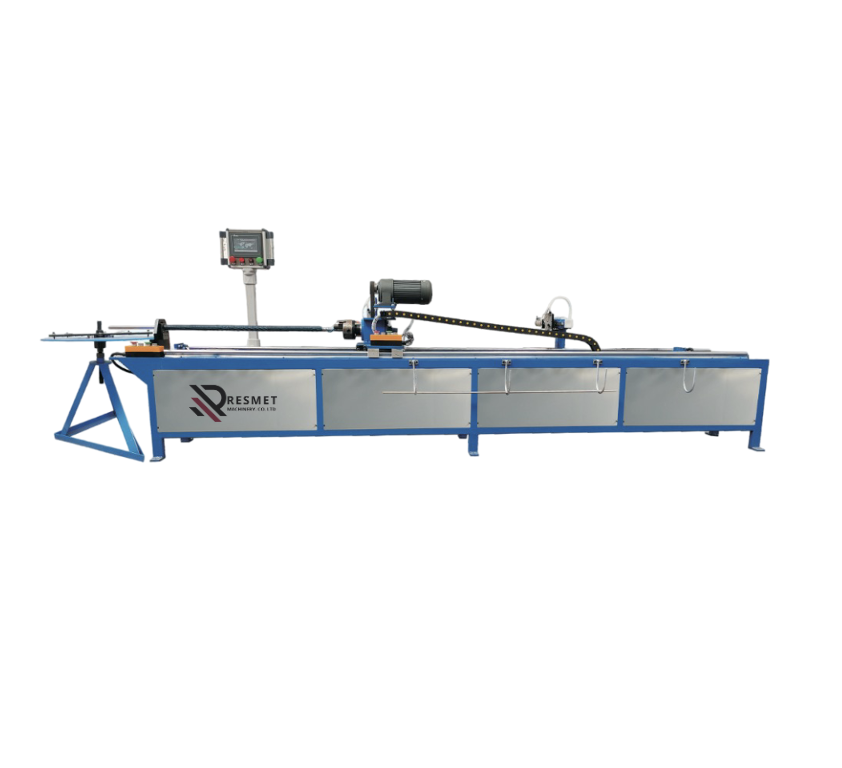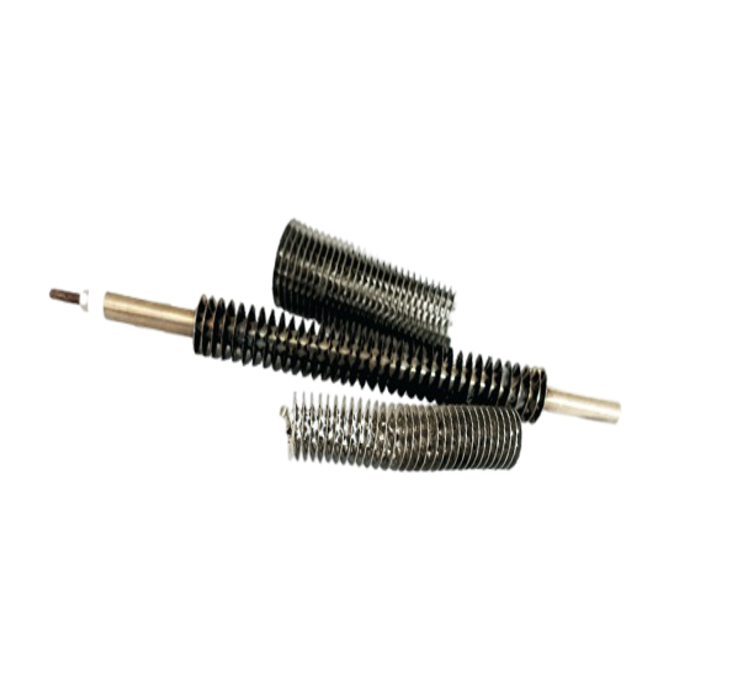





The RM146B screwing machine for fin heater with PLC control is based on its economical version and incorporates PLC control via touch screen, which increases the precision and convenience of winding. The machine uses a movable mandrel, ideal for the operation of large and small tubes.
The working principle of the fin tubular heater is mainly based on convection heat conduction and transfer. When a hot fluid (such as hot water or steam) flows through the fin heater, the heat is first transferred to the fin by conduction through the tube wall. Since fins are usually made of materials with good thermal conductivity (such as copper and aluminum), heat is quickly transferred from the tube wall to the fin surface.
Heat conduction refers to the process of transferring heat from a high temperature to a low temperature. In the fin tubular heater , heat is transferred to the fin through the tube wall. This process is similar to a relay race, and heat is transferred along the "fast lane" of the tube and fin.
Convection heat transfer refers to when the surface temperature of the fin increases, a temperature difference forms with the surrounding cold air, inducing a convection cycle. When cold air comes into contact with the fin's surface, which has a higher temperature, it absorbs heat and rises, while the surrounding cold air continuously replenishes the fin's surface, forming a continuous convection cycle. This process is similar to that of boiling water: the water at the bottom of a pot rises due to heat, while the surrounding cold water descends to replenish and circulates continuously.
During the heat dissipation process, the thermal medium transfers heat to the fins in the flow. After heat exchange is complete, the thermal medium with a lower temperature re-enters the heat source for heating, and after heat recovery, it continues to enter the radiator for heat exchange, and so on, for continuous heat transfer and efficient use. Application scenarios include various equipment that requires efficient heat dissipation, such as large heat exchange equipment in industrial production, small heat dissipation devices in daily life, etc. Especially in situations where fast and efficient heat dissipation is required, such as in boiler feedwater heating link in thermal power plants, the use of finned double-head heat pipes can significantly improve the efficiency of heat transfer.